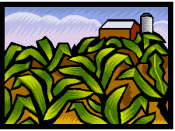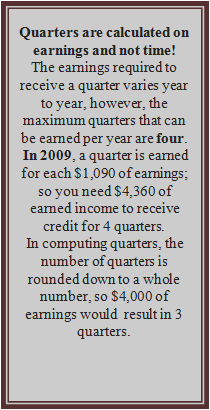

To send a message to an author, click on the author's name at the end of the article.
This Month in Ag Connection | Ag Connection - Other Issues Online

It's not uncommon for producers to harvest their corn stover for livestock purposes or for potential for biomass energy production. Some prices that have been mentioned are as high as $20 a ton, which would amount to $60 an acre for a three ton harvest. These prices may sound good, but a further evaluation of the true value of the stover should be looked at.
One of the primary considerations is the nutrient content of the stover and what it is worth to future crops. The value of the stover is determined by the amount of residue produced, the nutrient concentration of the residue and the current commercial nutrient replacement cost. Approximately 1 ton of crop residue (at 10% moisture) is produced with 40 bushels of corn or grain sorghum (56 lb/bu at 15.5%), 30 bushels of soybean, and 20 bushels of wheat. The concentration of nutrients in crop residue will vary with the season, management practices, time of harvest, and location. In addition, crop residue components differ in nutrient concentration, with most elements concentrated more in leaves and husks than in stalks.

The typical nutrient content for corn or sorghum is about 17 lb. of nitrogen, 4 lb. of P2O5, 50 lb. of K2O and 3 lb sulfur per ton of dry harvested residue. Using current fertilizer prices, these nutrients are worth about $36/ton of residue. If the fertility level of your soil is at a high enough level that you do not need to replace the nutrient in the residue, then removing the residue may work. Eventually you could reach a point where these nutrients will have to be replaced and at a cost that is anyone's guess.
Removal of the crop residues may also affect water use efficiency, which would be particularly important in a drier year. In the first year of a study in Kentucky evaluating the effects of stover removal, John Grove associate professor for soil nutrient management, found that fields with a normal amount of residue yielded nine bushels an acre more than fields with no crop residue. He determined that the yield difference was due to improved water use efficiency under the droughty conditions that he experienced.
Another consideration is that residue removal could result in soil compaction from baling and removal of the residue, reduced soil organic matter and soil biological activity, and an increase potential for water and wind erosion on unprotected soils. These concerns will vary with weather and cropping patterns.
The main point to remember is that corn residue is not free. There is some value and cost associated with it and with today's input prices; all factors need to be considered.
Source: Wayne Crook, MU Extension Agronomy Specialist
This Month in Ag Connection | Ag Connection - Other Issues Online
The basic philosophy behind Social Security (SS) is rather simple. During your working years you put funds into the "system" - and when you retire or become disabled, you and members of your family become eligible for monthly benefits. Further, your survivors may be eligible to receive benefits after you die. However, it should be recognized, particularly in today's economic and political environment, the Social Security system was not designed nor intended to be an individual's only or even the main source of retirement income or disability coverage.

Your age and your earning's history are key factors which will affect the amount of your SS retirement benefits. Individuals need 40 quarters (10 years) of earnings subject to SS taxes in order qualify for SS retirement benefits.
The following are important issues for people nearing retirement age to consider. First, how are retirement benefits calculated; second, should you "beef-up" your earnings shortly before retirement; and third, should you file for benefits at age 62, full-benefit age, or later?
Since 1991, the calculation of retirement benefits is much easier to understand. First, your earnings which have been reported over the years are indexed to adjust for inflation. Second, the highest 35 years of indexed earnings are added together and divided by 420 months (the number of months in 35 years) to arrive at your "Average Indexed Monthly Earnings" (AIME). Finally, the AIME is multiplied by a percentage to determine your retirement benefits. The marginal percentage is 90% for individuals with a low AIME, 32% for medium level earners, and 15% for individuals with a high AIME.
This percentage weighting of the benefit formula in favor of low-income earners, is one reason why people in higher income brackets are attempting to minimize their exposure to Social Security tax liability. For example, $10,000 additional earnings would increase the AIME only $23.81 (assuming that year was one of the high 35 years and was $10,000 greater than the year it replaced). A person with a low history of earnings would receive increased monthly benefits equal to 90 percent of the $23.81 ($21.40); while a person with a high history of earnings would only receive 15 percent of the $23.81 ($3.50) per month for reporting the extra $10,000 of earnings. Given, the net self-employment taxes on the extra $10,000 would be in the neighborhood of $1,215; the time required to get the extra tax back (not figuring the present value of money) for historically low earners would be around 5 years, while the payout for historically high earners would be around 28 years (ouch!).
The third question of when to start receiving retirement benefits is more subjective and difficult to answer. If you're at retirement age, but continuing to work, the Social Security benefit formula will only provide you with increased monthly retirement benefits if your current earnings are greater than any of the indexed earnings in your high 35 year earnings base. Your retirement benefits can be received as early as age 62. However, if you begin receiving your benefits early, the benefits are reduced a small percentage for each month before your "full" retirement age (currently 66 years). If you sign-up for benefits at age 62, (48 months early) you will receive 75 percent of your full benefit amount. The disadvantage of starting your benefits early is that your monthly benefit is permanently reduced. The advantage, of course, is that you collect benefits for a longer period of time. On the flip-side, if you delay retirement past your full retirement age your annual benefit will be increased 8% per year up to a maximum increase of 32% at age 70.
For the self-employed farmer electing early retirement, the selection of the "month of retirement and entitlement" can have significant consequences regarding the hold-over of inventory and the impact on the earnings exclusion. First, during the calendar year selected as the initial year of retirement, you are entitled to your full total monthly benefits regardless of the amount of your annual earned income prior to retirement, as long as you devote less than 45 hours to the business of farming during the retirement months. Additionally, income received after the initial year of entitlement to retirement benefits can be excluded from the earnings test, if the income is not attributable to services performed after the initial month of entitlement (hold-over grain inventory harvested prior to retirement).
Source: Parman R. Green, MU Extension Ag Business Mgmt. Specialist
This Month in Ag Connection | Ag Connection - Other Issues Online

When it comes to sweetness in tomatoes, size really does matter, and the smaller varieties usually come out the winners.
Cherry-sized tomatoes took the top three spots in a field of 62 contenders at the recent University of Missouri Tomato Festival at the MU Bradford Research and Extension Center near Columbia. The event drew almost 500 visitors, the largest turnout in its four-year history. Participants were asked to taste small samples and record their preferences on score sheets.
"There's a relationship between tomato production in pounds and sweetness," said MU horticulturist David Trinklein. "Since tomato plants have relatively the same ability to manufacture sugar, plants bearing small fruit put that same amount of sugar into fewer pounds of fruit, making the smaller fruits sweeter."
Super Sweet 100, a hybrid red fruit, scored the highest, followed by a yellow Super Suncherry Hybrid and Sugary Hybrid, a red cherry fruit,
Visitors judged tomatoes on a five-point scale. Each of the top fruit varieties scored above 4.0. Larger varieties such as Big Boy, Beefmaster and Giant Belgium scored in the 2.5 range.
Tomato Festival Evaluation Results
Submitted: James Quinn, MU Extension Horticulture Specialist
Author: David Trinklein, MU Extension Horticulture State Specialist
This Month in Ag Connection | Ag Connection - Other Issues Online
Agriculture's contribution to carbon footprinting and greenhouse gasses is pointed out in headlines from the Wall Street Journal to Successful Farming. In an effort to educate the public, twelve Midwest universities are collaborating to host a virtual conference that rewrites the headlines and suggests that agriculture can be an integral part of sustaining the planet. In a collaborative effort the universities are offering "Growing the Bioeconomy: Solutions for Sustainability" on Dec. 1, 2009 to share how that might be done.
"This conference will be a day filled with presenters offering solutions for sustainability," said Paul Brown, Iowa State University Extension Agriculture & Natural Resources Assistant Director and conference chairperson. "Keynote speaker James Lovelock is one of the world's most renowned thinkers on global environmental science. In his message, Dr. Lovelock calls upon farmers to convert agricultural residues to biochar* for incorporation into the soil as the solution to global climate change."

Lovelock's presentation will be delivered via live internet feed to all participants. The morning plenary session will also include presentations by Johannes Lehmann, associate professor of soil fertility management and soil biogeochemistry at Cornell University and Matt Liebman, Wallace Chair for sustainable Agriculture at Iowa State University. Lehmann will discuss the combined benefit of biochar for carbon sequestration and improved soil fertility. Liebman will present research findings on integrating conservation with biofuel feedstock production.
From Wyoming to Ohio and Minnesota to Kansas, universities will co-host conference sites and share content through high-speed communication systems. Participants have the option of attending a state sponsored site, signing on as a corporate location or logging into the conference from anyplace in the world. Specific information about participation options and conference registration are available at www.bioeconomyconference.org/registration.
In central Missouri, the conference will be hosted at the University of Missouri Bradford Research and Extension Center just east of Columbia. In addition to the daytime program, an evening program is also planned. The evening will highlight bioenergy research initiatives being conducted at the University of Missouri. The evening program will start directly after dinner at 6:30 p.m. Additional conference information is available at www.bioeconomyconference.org/.
Conference co-hosts University of Nebraska (UN), Michigan State University (MSU), North Dakota State University (NDSU) and Purdue University are organizing and e-hosting the afternoon concurrent sessions. The session begins at 1 p.m. and offers two tracks - net greenhouse gas emission from biofuel systems, hosted by UN; and non-traditional feedstocks, hosted by MSU. The second concurrent session begins at 3:30 and covers topics related to advances and breakthroughs in biofuels, hosted by NDSU; and bioenergy economic and policy issues, hosted by Purdue. All tracks have four speakers; speaker and topic details are available at www.bioeconomyconference.org/speakers/session.htm.
For additional information contact: Don Day by phone: 573-882-6385 or email: daydr@missouri.edu or Kent Shannon, NR Engineering Specialist by phone: 573-445-9792 or email: shannond@missouri.edu
This Month in Ag Connection | Ag Connection - Other Issues Online
When: December 15, 2009
Registration at 8:30am; Programs start at 9:30am - 4pm
Where: Boone County Fairgrounds ( 5212 N. Oakland Gravel Rd. Columbia, MO)
Fee: Early registration is $30 for a single & $45 for a couple.
On-site registration— is $40 and $55 respectively.
Fee includes lunch and proceedings

Program Topics:
Forage fertility research results, grazing wedges, alternative
livestock marketing, brush control with goats, cool-season grass variety
results from SW Center, fencing, alternative winter feeding strategies
producer panel and keynote speakers will talk on the animal rights movement and it's impact on animal agriculture.
Visit the Mid-MO Grazing Conference Website
For more information or to register contact: Ed Gillmore or Peggy Lemons at 573-893-5188 ext 3.
This Month in Ag Connection | Ag Connection - Other Issues Online
Publishing Information
Ag Connection is published monthly for Northeast and Central areas of Missouri producers and is supported by the University of Missouri Extension, the Missouri Agricultural Experiment Station, and the MU College of Agriculture, Food and Natural Resources. Managing Editor: Mary Sobba.